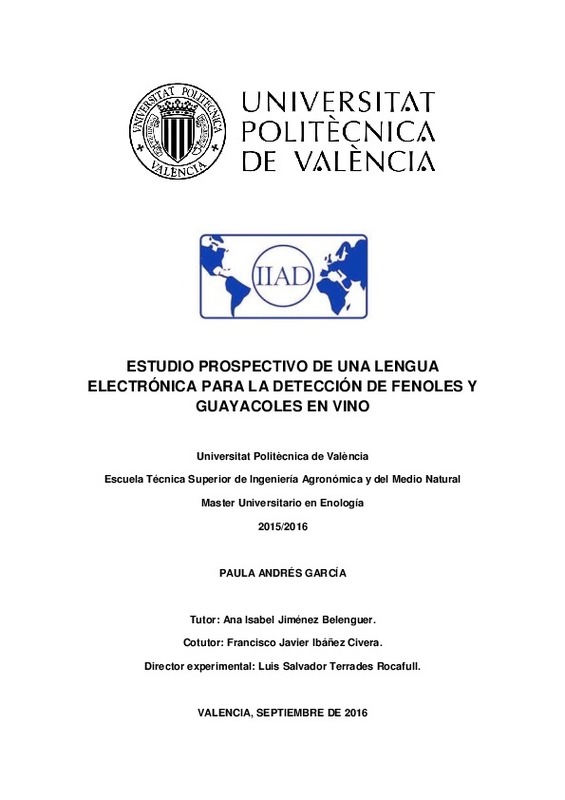JavaScript is disabled for your browser. Some features of this site may not work without it.
Buscar en RiuNet
Listar
Mi cuenta
Estadísticas
Ayuda RiuNet
Admin. UPV
Estudio prospectivo de una lengua electrónica para la detección de Fenoles y Guayacoles en vino
Mostrar el registro completo del ítem
Andrés García, P. (2016). Estudio prospectivo de una lengua electrónica para la detección de Fenoles y Guayacoles en vino. Universitat Politècnica de València. http://hdl.handle.net/10251/73333
Por favor, use este identificador para citar o enlazar este ítem: http://hdl.handle.net/10251/73333
Ficheros en el ítem
Metadatos del ítem
| Título: | Estudio prospectivo de una lengua electrónica para la detección de Fenoles y Guayacoles en vino | |||
| Autor: | Andrés García, Paula | |||
| Director(es): | ||||
| Entidad UPV: |
|
|||
| Fecha acto/lectura: |
|
|||
| Resumen: |
[ES] Los fenoles volátiles 4-etilfenol, 4-etilguayacol, 4-vinilfenol y 4-vinilguayacol son uno de los problemas más importantes en la elaboración y crianza del vino actualmente. La levadura Brettanomyces bruxellensis ...[+]
[EN] The volatile phenols 4-ethylphenol, 4-ethylguaiacol, 4-vinylphenol and 4-vinylguaiacol are one of the most important problems in the production and aging of wine actually. Brettanomyces bruxellensis yeast transforms ...[+]
|
|||
| Palabras clave: |
|
|||
| Derechos de uso: | Reserva de todos los derechos | |||
| Editorial: |
|
|||
| Titulación: |
|
|||
| Tipo: |
|
recommendations
Este ítem aparece en la(s) siguiente(s) colección(ones)
-
ETSIAMN - Trabajos académicos [3541]
Escuela Técnica Superior de Ingeniería Agronómica y del Medio Natural







